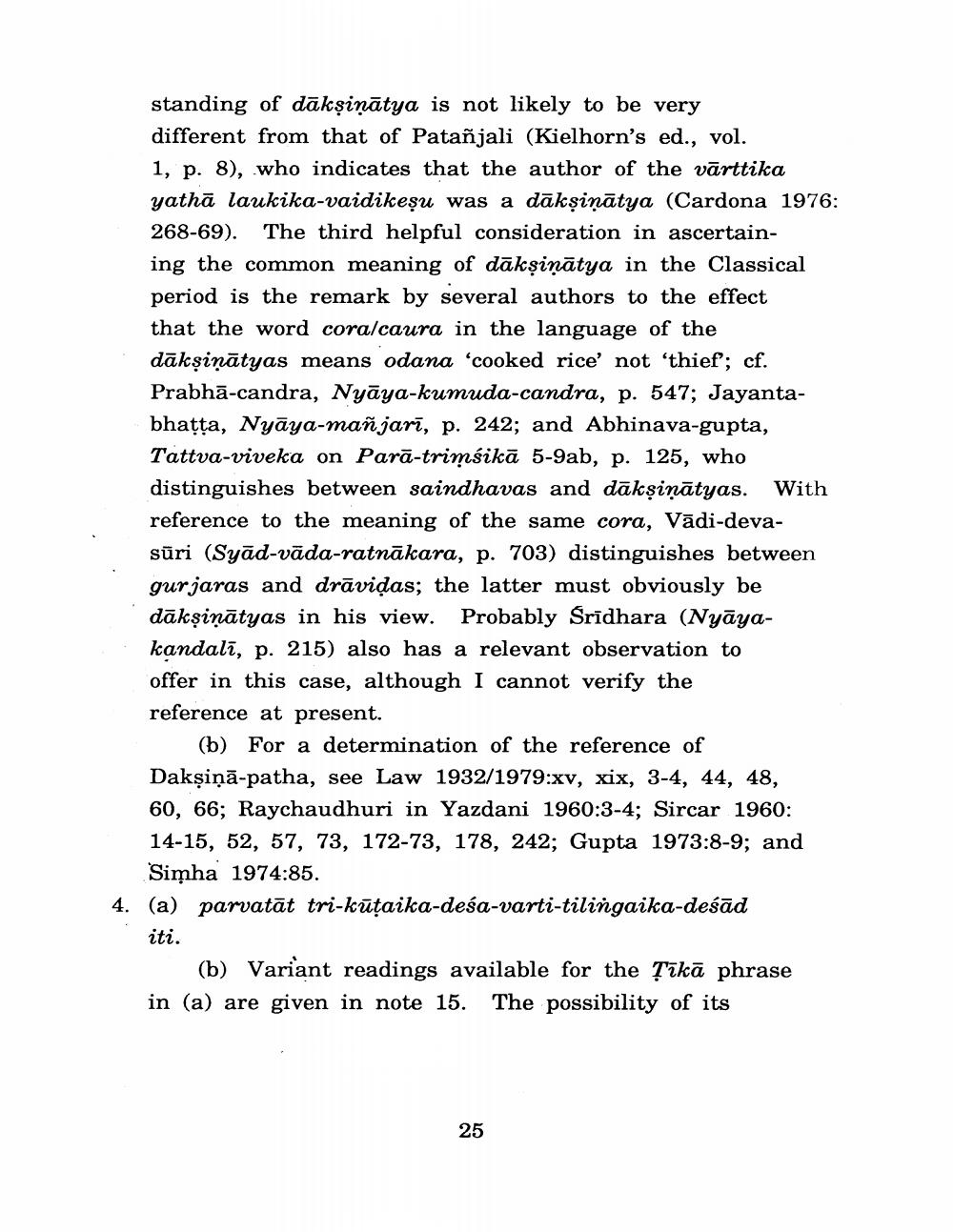________________
standing of dākṣiṇātya is not likely to be very different from that of Patañjali (Kielhorn's ed., vol. 1, p. 8), who indicates that the author of the vārttika yathā laukika-vaidikeșu was a dākṣiṇātya (Cardona 1976: 268-69). The third helpful consideration in ascertaining the common meaning of dākṣinātya in the Classical period is the remark by several authors to the effect that the word cora/caura in the language of the dākṣiṇātyas means odana 'cooked rice' not 'thief'; cf. Prabhā-candra, Nyāya-kumuda-candra, p. 547; Jayantabhatta, Nyāya-mañ jarī, p. 242; and Abhinava-gupta, Tattva-viveka on Parā-trimśikā 5-9ab, p. 125, who distinguishes between saindhavas and dākṣiṇātyas. With reference to the meaning of the same cora, Vādi-devasūri (Syād-vāda-ratnākara, p. 703) distinguishes between gurjaras and drāvidas; the latter must obviously be dāksinātyas in his view. Probably Sridhara (Nyāyakandalī, p. 215) also has a relevant observation to offer in this case, although I cannot verify the reference at present.
(b) For a determination of the reference of Dakşiņā-patha, see Law 1932/1979:xv, xix, 3-4, 44, 48, 60, 66; Raychaudhuri in Yazdani 1960:3-4; Sircar 1960: 14-15, 52, 57, 73, 172-73, 178, 242; Gupta 1973:8-9; and
Simha 1974:85. 4. (a) parvatāt tri-kūțaika-deśa-varti-tilingaika-deśād iti.
(b) Variant readings available for the sīkā phrase in (a) are given in note 15. The possibility of its
25




